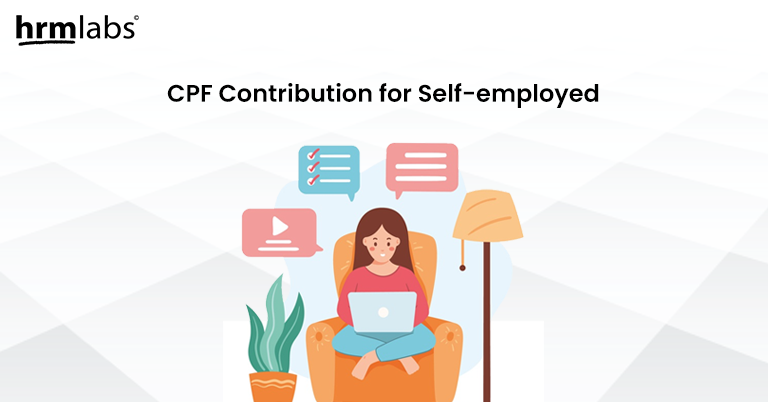What Does Self-Employed Mean?
a self-employed person doesn’t work for a specific employer who pays them a consistent salary. Self-employed individuals, or independent contractors, earn income by contracting with a trade or business directly.
Self-employed persons may be involved in a variety of occupations but generally are highly skilled at a particular kind of work. Writers, tradespeople, freelancers, traders/investors, lawyers, salespeople, and insurance agents all may be self-employed persons.

Self-employed persons may be involved in a variety of occupations but generally are highly skilled at a particular kind of work. Writers, tradespeople, freelancers, traders/investors, lawyers, salespeople, and insurance agents all may be self-employed persons.
Types of Self-Employement
There are many kinds of self-employed worker. With different factors such as your desired work schedule; whether you want to commit to a contract, and for how long; and how much oversight you need, don’t need, or want to provide.

Freelancer
One of the great appeals of freelance work is tremendous freedom of choice: in an ideal freelance world, you can choose assignments, draw up your own work schedule, and decide where and when you work. To be sure, freelance workers often don’t have the benefits that many regular “employees” have.
Independent Contractor
Working under the terms of a contract, either long- or short-term, an independent contractor role may be a good route for you to become self-employed. Under IRS rules, an independent contractor is defined as someone whose work is controlled or directed by the payer; the specifics of how the work is done is secondary.
Temporary Worker
If your idea of independence is to work for a prescribed time and then step away, temporary work on your own schedule may be an option to consider. As a temporary worker, you can find employment in a wide range of fields, along with a range of times for the terms of employment.
Seasonal Staff
The name says it all: seasonal work can be determined by factors like holiday schedules, outdoor sports activities, customer service demands, the “tax season,” and, of course, the seasons of the year. As a seasonal worker, you can have control over the intensity of your work schedule. A seasonal tax worker, for example, ramps up as tax deadline approaches, but can scale back for months at a time during the rest of the year.
Alternative Schedule Professional
It’s helpful to understand the difference between a flexible schedule vs. alternative schedule to decide which might work best for you as a self-employed worker. The idea is that you’ll be working a schedule that’s alternative to a traditional work schedule, and the good news is that employers increasingly are open to hiring freelancers and self-employed workers to fill alternative schedule positions.
Independent Business Owner
Many independent business owners are people who’ve “taken the leap” from simply working for themselves, to establishing a long-term, “sustainable” business based on systems and processes put in place during a freelance career.
Can Foreigner be Self-Employed in Singapore?
In Singapore, you can only be legally self-employed if you’re a permanent resident or citizen. You will also need to pay income tax and contribute to your Medisave account, which is a national medical savings scheme for permanent residents and citizens. Foreigners are not allowed to work without a Work Permit, Employment Pass, or S Pass.
With that said, you have two options to get around this, including setting up a local business or applying for an Entrepass. To set up a local company, you’ll need to have one Singaporean resident as a director at a minimum. If you want to apply for an Entrepass, you’ll have to incorporate a company and raise a minimum amount of funding. Similarly, you can seek partnerships with approved organizations.
Generally speaking, you do not need to register your services as a freelancer with the government. However, for some trades or services, you’ll have to apply for a license

What is CPF
Central Provident Fund (CPF) is a key pillar of Singapore’s comprehensive social security system, also serves to meet the retirement, housing and healthcare needs. It’s a mandatory social security savings scheme funded by contributions from employers and employees.
If you are a working Singaporean, you and your employer make monthly contributions to the CPF. These contributions go into 3 accounts:
– Ordinary Account: Primarily for retirement and housing needs.
– Special Account: Primarily for retirement needs.
– MediSave Account: Primarily for healthcare needs.
When you reach 55 years old, savings from your Special Account and Ordinary Account will be transferred to your Retirement Account to form your retirement sum.
Do Independent Workers Need to Pay CPF contribution?
All self-employed persons who:
- Earn an annual Net Trade Income (NTI) of more than SGD 6,000
- Singaporean citizens or permanent residents
Need to contribute to MediSave after receiving a Notice of Computation (NOC). NTI is your gross trade income minus all allowable business expenses, capital allowances, and trade losses as determined by IRAS.
Your MediSave contribution depends on your age, net trade income for the previous year, and annual NTI. You can use this calculator to calculate how much you have to contribute to MediSave.
If you are not issued with an income tax return filing package by IRAS for the year, you can declare your actual income by using Form IRAS 144 at any CPF Service Centre, SingPost branches, or online using your SingPass. For income declared to the Board, you need to make the MediSave contributions 30 days from the date of issue of Notice of Contribution from CPF Board. If you have any notice about an income tax return filing package for the year, you have to declare your income or changes to income to IRAS.
Contributions must be made within 30 days of the date stated in the NOC of CPF Contributions from IRAS. The NOC would state clearly how much you have to contribute.
IRAS sends the NOC after assessing your income i.e. after you have filed your income tax return and received your Notice of Assessment. You do not have to wait for the NOC to make your contributions. You can contribute throughout the year.
Alternatively, you may also make your contributions through GIRO Instalment Plans. The payments will be according to the instalment plan issued by the Central Provident Fund (CPF) Board.

